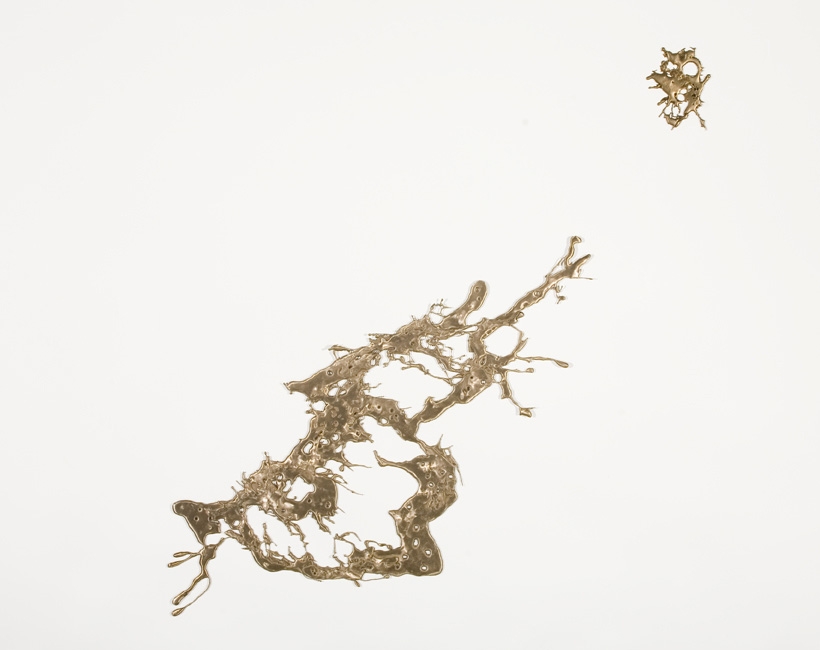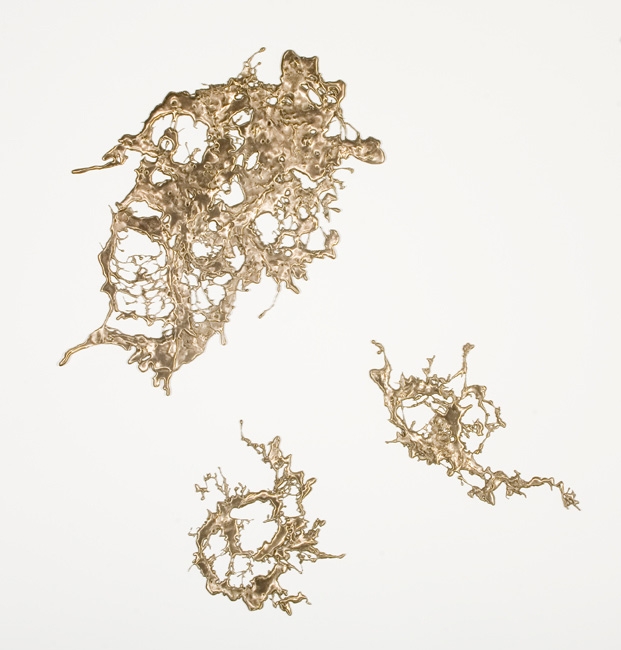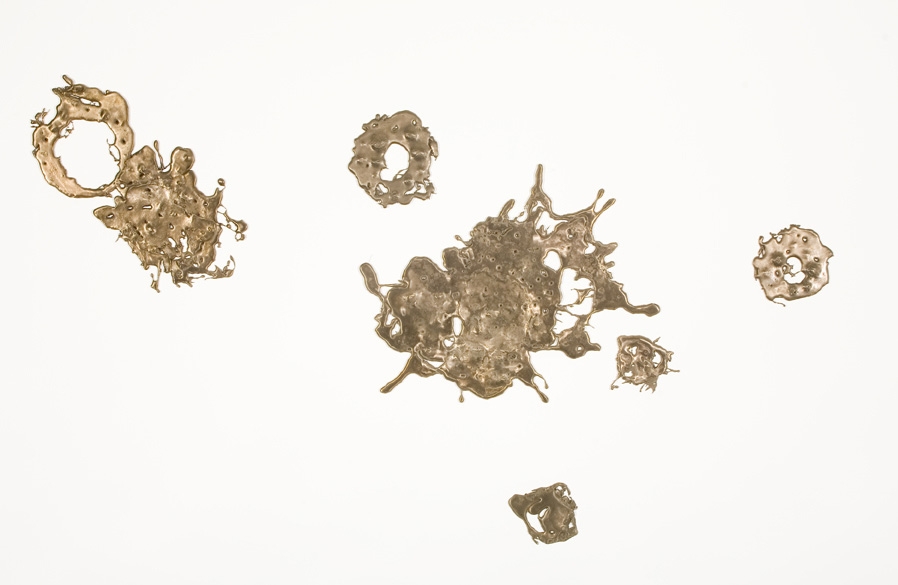
Being Swallowed by the Milky Way
, 2008Pencil and fire on paper
200 x 130cm
For the past decade and a half, Lindy Lee’s work has investigated questions of ‘self’ in relation to her Chinese-Australian heritage as framed by her Zen Buddhist practice. In previous work, Lee has used images from her family photo albums to prise open the experiences of loss and transition over the five generations it has taken to travel from China to Australia. Along side the photographic elements of her work, there has always been a more painterly aspect – the wax splats and ink spills. These ‘accidental’ splats are based in the ancient Chinese practice of ‘flung ink’ painting. Ch’an (Zen) Buddhist monks would meditate for a period of time and then fling the ink from a container. The mark that results from the flinging of the ink encapsulates the totality of the universe – the sum of all conditions, which underlie the creation of ‘this’ moment. By letting go of the ego self the monk surrenders to ‘the self that arrays itself in the form of the entire world’ [Dogen]
The bronze sculptures are a natural extension of Lee’s ‘flung ink practice’ however instead of spilling ink or wax, the searing liquid of molten bronze is thrown on to the foundry floor. What results are, as Lee names them, Flames from the Dragon’s Pearl. In China, dragons are creatures of immense mythical power. Unlike dragons in Western folklore, where they are often characterised as malevolent and destructive, the Chinese dragon represents the creative energy of the universe. Dragons are symbols of good fortune, benevolence and peace. They reside in deep expanses of water but also swim in the winds of the sky. Seen from the earth, they can look like slow moving clouds or lighting flashes. The dragon is the rainmaker but even more importantly is the embodiment of cosmic and elemental forces at play – forces, which are beyond the realm of human intervention and yet completely material to human existence. A flaming pearl is often depicted with the dragon. The dragon’s pearl is symbolic of Qi, the progenitor of all energy and creation – it is the ‘Treasure of Infinite Potentiality.’ The origin of this image has Daoist roots and is thought to be a representation of the moon.
The drawings are depictions of the Chinese bodhisattva Kuan Yin. She is the Buddhist deity of compassion. In Buddhism, compassion is more than just kindness. It is the capacity to hold all experience without prejudice or preference – the good, the bad, the joyful and the heartbreaking. In these drawings, Kuan Yin dances in fiery rain – the transformative path of difficulty. Kuan Yin is the one who hears and attends to all the cries of the world. This quality is cultivated in Zen practice – the meditative experience necessitates an openness to all experience, to meet fully each moment without hesitation or evasion.
Tales of Moonlight and Fire marks the beginning of a new chapter in Lee’s work. She still persists in her enquiry about what ‘self’ actually means but the work is taking on more elemental dimensions.
– Lindy Lee, 2008
Artist’s profile











